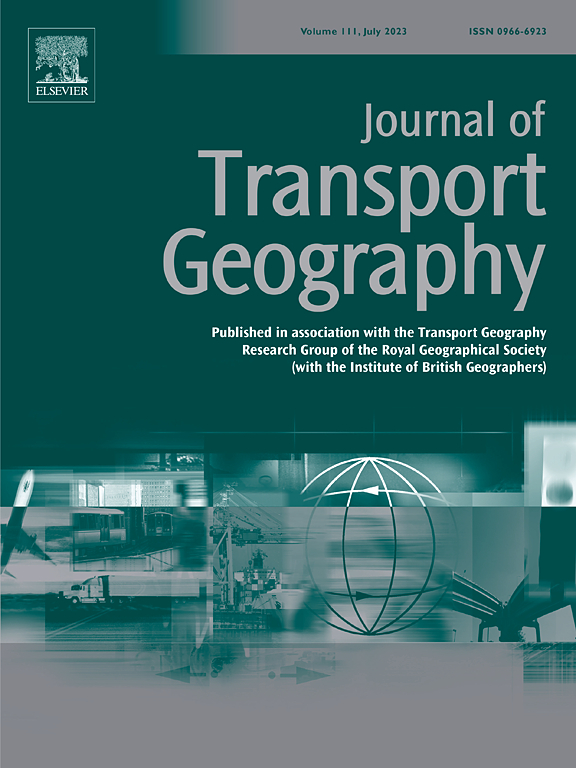揭示二维/三维建筑环境与工房分离耦合非线性和空间非平稳性的关系
IF 5.7
2区 工程技术
Q1 ECONOMICS
引用次数: 0
摘要
以交通为导向的发展鼓励大都市通过优化建筑环境来缓解职住分离(JHS)。研究发现,BE对家庭取向和工作取向的JHS有不同的影响,但他们的统计模型忽略了这种关系的非线性和空间非平稳特征。在这项研究中,我们收集了基于位置的服务数据来识别通勤者,并将他们从家庭或工作方向汇总到188个地铁站区域。根据距离衰减规律定义了测量JHS的参数β,在“节点-位置-功能”体系中加入三维(3D)指标来描述BE,并应用多模型比较后的LightGBM-SHAP来学习和可视化它们之间的复杂关系。我们确定了三种类型的BE变量:1)只在一个方向上表现出重要的影响,2)在两个方向上表现出相似的影响,以及3)在两个方向上表现出相反的影响。特别地,我们设计了一个新的SHAP可视化框架,该框架将非线性依赖与空间分布协同起来,可以同时为政策调控提供阈值目标和空间范围。例如,汉阳应将其共享自行车密度增加到900辆/平方公里,以满足居民的出行需求,而江汉应提供经济适用房(<;18万元/平方米),以满足工人的住房需求。研究结果旨在鼓励规划者在调节实际空间时考虑非线性确定阈值,从而直接支持有限资源条件下的精细化城市管理。本文章由计算机程序翻译,如有差异,请以英文原文为准。
Revealing the relationship between 2D/3D built environment and jobs-housing separation coupling nonlinearity and spatial nonstationarity
Transit-oriented development encourages metropolises to alleviate jobs-housing separation (JHS) by optimizing the built environment (BE). Researchers have found that BE exerts different effects on home- and work-oriented JHS, but their statistical models ignored the nonlinear and spatially nonstationary features of the relationship. In this study, we collected location-based service data to identify commuters and aggregated them to 188 metro station areas from a home or work orientation. We then defined a parameter β to measure JHS following the distance decay law, added three-dimensional (3D) indicators to the “Node-Place-Function” system to describe the BE, and applied the LightGBM-SHAP after multi-model comparison to learn and visualize their complex relationships. We identified three types of BE variables: 1) exhibiting important effects only on one orientation, 2) exhibiting similar effects on two orientations, and 3) exhibiting opposite effects on two orientations. Particularly, we designed a new visualization framework for SHAP that synergizes nonlinear dependency with the spatial distribution, which can provide threshold targets and spatial ranges for policy regulation simultaneously. For example, Hanyang should increase its shared bicycle density to 900 vehicles/km2 to meet the travel needs of residents, while Jianghan should provide affordable housing (<180,00 yuan/m2 ) to meet the housing needs of workers. Our findings aim to encourage planners to consider nonlinear determined thresholds in regulating actual spaces, which can directly support the refined urban management under limited resource condition.
求助全文
通过发布文献求助,成功后即可免费获取论文全文。
去求助
来源期刊

Journal of Transport Geography
Multiple-
CiteScore
11.50
自引率
11.50%
发文量
197
期刊介绍:
A major resurgence has occurred in transport geography in the wake of political and policy changes, huge transport infrastructure projects and responses to urban traffic congestion. The Journal of Transport Geography provides a central focus for developments in this rapidly expanding sub-discipline.
 求助内容:
求助内容: 应助结果提醒方式:
应助结果提醒方式:


